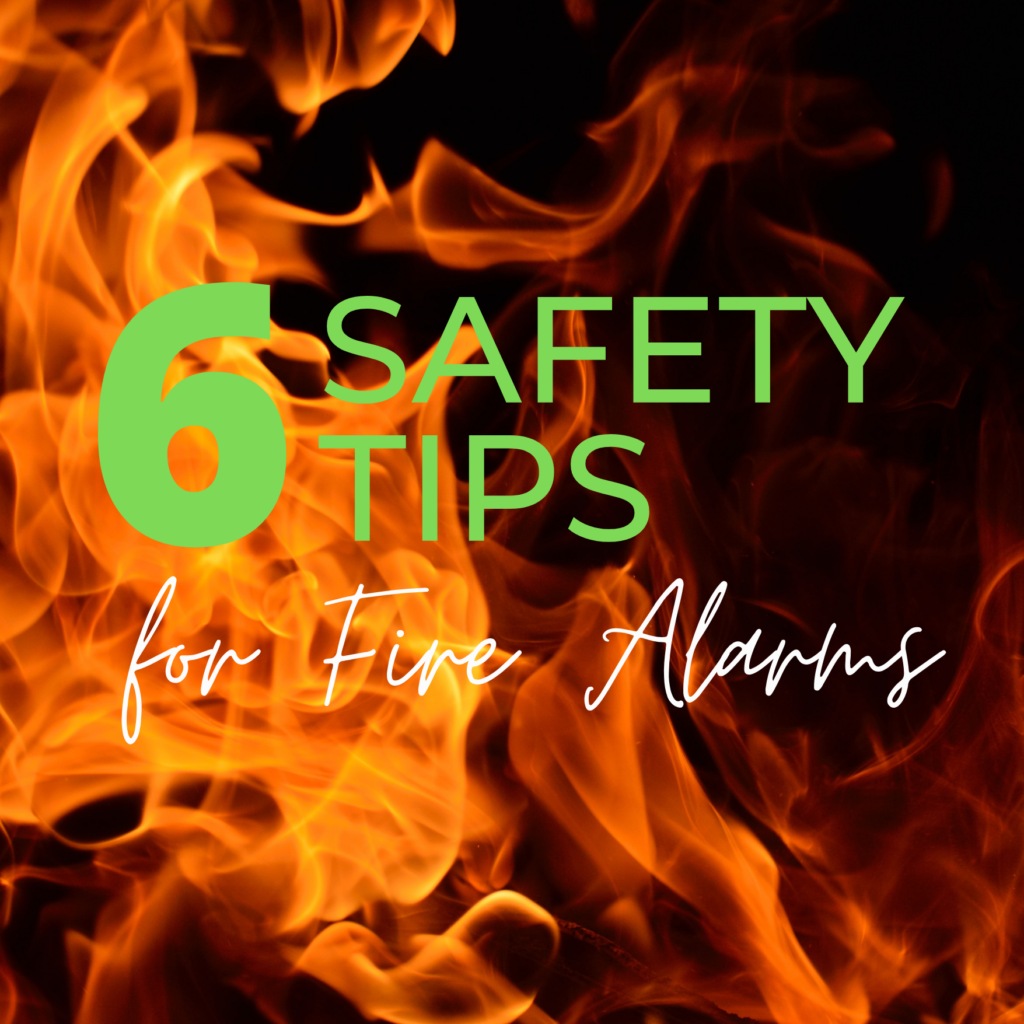
Have you checked your smoke alarms lately? It truly is a matter of life or death. Smoke alarms that are missing or not working play a role in nearly 3 out of 5 fire-related home deaths, according to the National Fire Protection Association.
If you’re renting a home or apartment, it’s easy to assume your smoke alarms are in good shape—but it’s always worth double-checking. Landlords are generally responsible for installing and maintaining these devices, but renters should also know how to test and report problems. Understanding how smoke alarms work and how to respond to them could save your life.
Here are 6 important safety tips to keep in mind:
1. Replace your alarms if they are 10 years old.
Check the back of the device for a manufacture date. If it’s been 10 years or more, it needs to be replaced—even if it still works. Today’s smoke alarms are more advanced and can better detect different types of fires. Your best bet is a dual-sensor smoke detector, which uses photoelectric and ionization technologies to quickly detect both smoldering and high-flame fires. Many newer models also include flashing lights when the alarm sounds. If you’re unsure about your alarm’s age or type, contact your property manager or landlord and request an inspection or replacement.
2. Test all of your home’s alarms once a month.
Each smoke alarm has a test button—press it to make sure the device is working properly. Set a reminder on your phone or calendar so it becomes a monthly habit. It’s a small task that can make a big difference.
3. Change your batteries once a year and follow manufacturer instructions.
If your smoke alarms use replaceable batteries, choose a date (like the start of a new year) to change them annually. If your device starts “chirping,” that means the battery is low—replace it immediately or notify your landlord. Some alarms contain non-replaceable 10-year batteries. These don’t need battery changes, but when they chirp, the entire device must be replaced right away. Always follow the manufacturer’s guidelines for battery type and replacement.
4. Install your smoke alarms correctly and confirm placement with your landlord.
There should be:
- A smoke alarm in every bedroom
- One outside each sleeping area
- One on every level of the home, including basements
- Avoid installing alarms directly in the kitchen to prevent false alarms—but keep one nearby, and have a fire extinguisher accessible. If you’re in an older unit, it may not meet current codes. Don’t hesitate to ask your landlord to upgrade or add alarms to meet today’s safety standards.
5. Get smoke alarms that are interconnected.
Interconnected smoke alarms—whether hardwired or wireless—ensure that when one alarm goes off, they all do. This provides faster warning, especially in larger or multi-room rentals. Check if your current alarms are interconnected, and if not, talk to your landlord about upgrading. Make sure to use alarms from the same manufacturer to ensure compatibility.
6. Stay informed about safety codes and device options.
When purchasing or requesting new alarms, make sure they’re from a recognized testing laboratory. Research models that fit your needs and budget. Follow the manufacturer’s instructions closely for installing, cleaning, testing, and replacing batteries if needed. And importantly: Make sure everyone in your home understands what the alarm sounds like and what to do when it goes off. Every household should have a fire escape plan—knowing how to exit safely is just as important as having a working alarm.
Take a few minutes to make sure your smoke alarms are working properly—and speak up if anything seems off. Your safety could depend on it.
Hi, there!
I'm Rose and I love helping first time home buyers make their first home more affordable and I love helping sellers looking to move up to their forever home. Let me know how I can help you make your real estate dreams come true.
Let's Meet
Contact
Get on my calendar
rose@movewithrose.com
Buy
My Listings
Sell
All Articles
schedule your free consultation